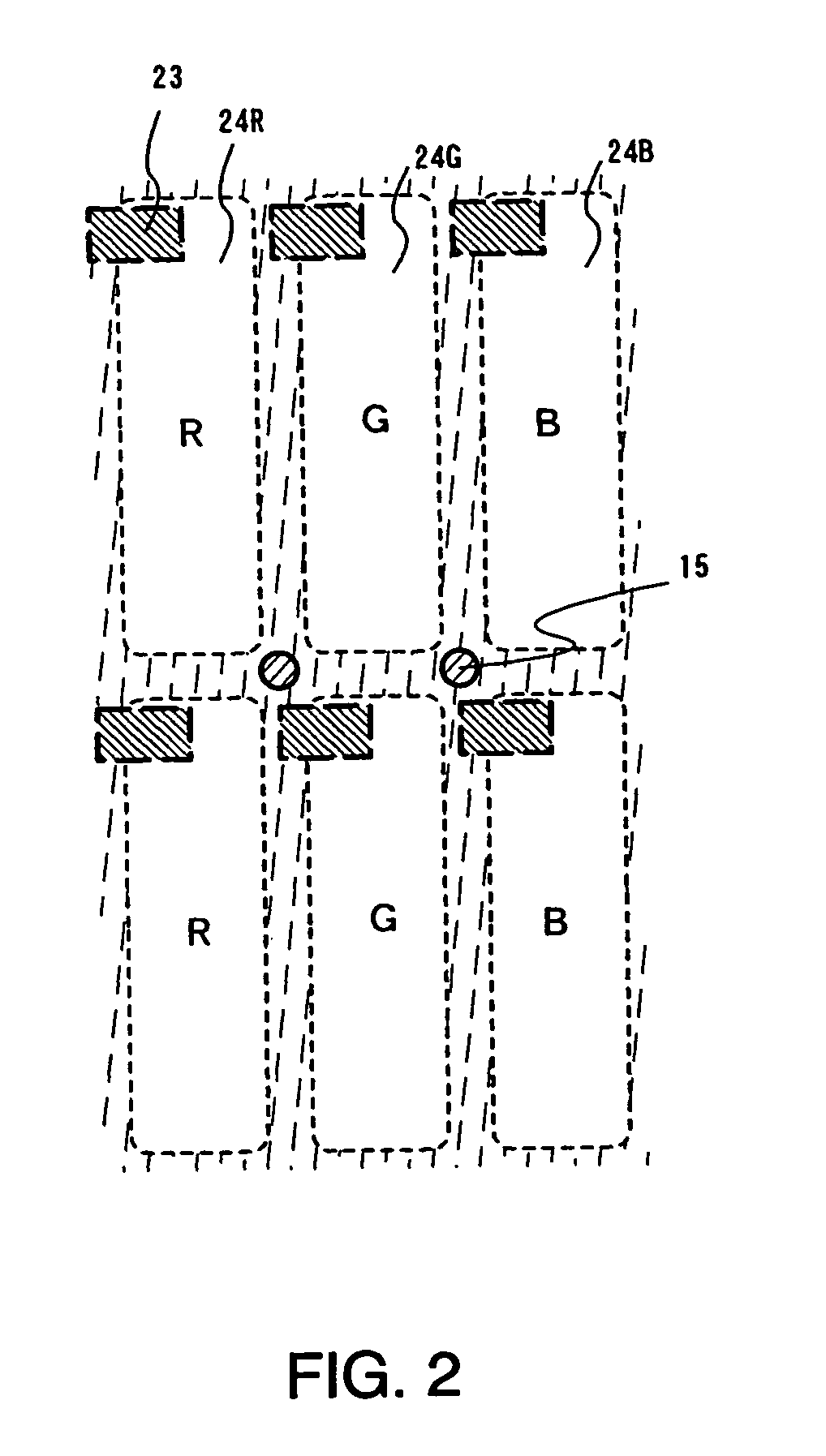Light emitting device, electronic appliance, and method for manufacturing light emitting device
a technology of light emitting devices and electronic appliances, which is applied in the manufacture of electrode systems, discharge tubes luminescnet screens, electric discharge tubes/lamps, etc., can solve the problems of lowering luminance of light emitting elements, and easy deterioration of el materials for forming el layers, so as to prevent moisture from entering the light emitting elements
- Summary
- Abstract
- Description
- Claims
- Application Information
AI Technical Summary
Benefits of technology
Problems solved by technology
Method used
Image
Examples
embodiment mode 1
[0059]The present embodiment mode will explains a method for manufacturing a light emitting device in the case of the multiple pattern in which a pair of attached substrates is divided into multiple patterns (e.g., two pieces of panels are manufactured from a pair of attached substrates) with reference to FIGS. 1A to 1F.
[0060]A second substrate 20 that will serve as a sealing substrate is prepared. Columnar spaces 15 are formed on the second substrate 20 (FIG. 1A). The columnar spacers 15 are formed by patterning a level film in predetermined portions. The height of the columnar spacers 15 is important, and determines a gap between two substrates. Although the columnar spacers are exemplified as structures for maintaining the gap therebetween, the spacers may have a wall-shaped structure or a grid-like structure, or a combination of such shapes.
[0061]The columnar spacers may contain a drying agent.
[0062]Patterns of a sealing material 12 is formed by using a dispenser device, a dropl...
embodiment mode 2
[0078]A method for manufacturing a dual-emission type display device will be described with reference to FIG. 5.
[0079]A base insulating film is formed on a substrate 400. In order to extract light from the substrate 400 as a display screen, a substrate with a light transmitting property such as a glass substrate and a quartz substrate may be used as the substrate 400. A heat-resistant plastic substrate with a light transmitting property that can withstand a processing temperature can also be employed. A glass substrate is, herein, used as the substrate 400. The refractive index of the glass substrate is approximately 1.55.
[0080]As the base insulating film, a base film made from a silicon oxide film, a silicon nitride film, a silicon oxynitride film, and the like is formed. The base insulating film has light transmitting properties. Although the base insulating film has, herein, two-layer structure, it may have a single layer or two or more layers of the above insulating films. Note ...
embodiment 1
[0132]In the present embodiment, FIG. 8 shows an example of a manufacturing device that is partly different of those in FIGS. 6 and 7.
[0133]As well as FIG. 6 and FIG. 7, the manufacturing device as shown in FIG. 8 includes: the transport chamber 108 for transporting a substrate to the delivery chamber 111; the delivery chamber 107; the gates 100j, and 100n to 100s; and the film formation chambers 109, 110, 113, and 132. In the embodiment, the portions identical to those in FIG. 6 and FIG. 7 will not be further explained for the sake of simplification. To prevent moisture from adhering, an inert gas (e.g., nitrogen gas) having a controlled dew point is preferably filled in the chambers (including the delivery chamber, the processing chamber, the transport chamber, a film formation chamber, etc.), other than an unloading chamber 219 and a sealing substrate loading chamber 217. Preferably, pressure in such chambers filled with an inert gas is kept under reduced pressure.
[0134]In FIG. 8...
PUM
 Login to View More
Login to View More Abstract
Description
Claims
Application Information
 Login to View More
Login to View More - R&D
- Intellectual Property
- Life Sciences
- Materials
- Tech Scout
- Unparalleled Data Quality
- Higher Quality Content
- 60% Fewer Hallucinations
Browse by: Latest US Patents, China's latest patents, Technical Efficacy Thesaurus, Application Domain, Technology Topic, Popular Technical Reports.
© 2025 PatSnap. All rights reserved.Legal|Privacy policy|Modern Slavery Act Transparency Statement|Sitemap|About US| Contact US: help@patsnap.com



